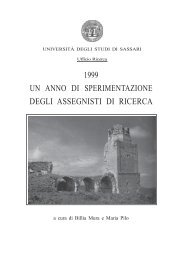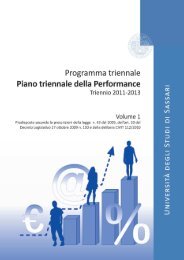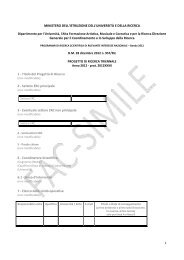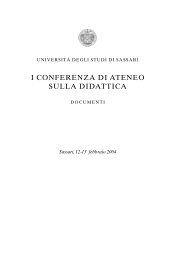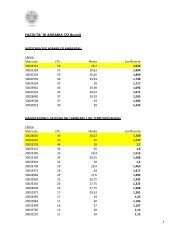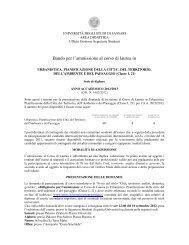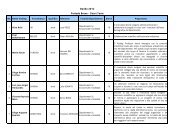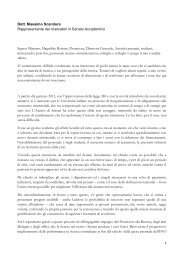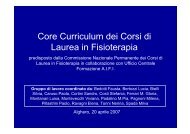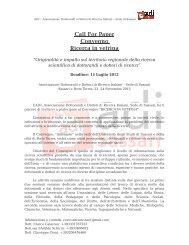Summary of `Popper's Contributions to the Theory of Probability' by ...
Summary of `Popper's Contributions to the Theory of Probability' by ...
Summary of `Popper's Contributions to the Theory of Probability' by ...
Create successful ePaper yourself
Turn your PDF publications into a flip-book with our unique Google optimized e-Paper software.
<strong>Summary</strong> <strong>of</strong> <strong>`Popper's</strong> <strong>Contributions</strong> <strong>to</strong> <strong>the</strong> <strong>Theory</strong> <strong>of</strong> <strong>Probability'</strong> <strong>by</strong> David Miller<br />
The rst draft <strong>of</strong> this paper, planned for The Cambridge Companion <strong>to</strong> Popper (forthcoming),<br />
was written in 2006. Many changes have been made since. Fur<strong>the</strong>r criticisms and suggestions<br />
for improvement will be valued, even if it is impossible <strong>to</strong> incorporate <strong>the</strong>m all before publication.<br />
0 The body <strong>of</strong> <strong>the</strong> paper deals with four distinct aspects <strong>of</strong> Popper's philosophical and logical<br />
work in probability <strong>the</strong>ory and its applications: <strong>the</strong> version <strong>of</strong> <strong>the</strong> frequency interpretation<br />
developed in Chapter VI <strong>of</strong> Logik der Forschung in 1934; <strong>the</strong> propensity interpretation,<br />
rst proposed in <strong>the</strong> 1950s in The Postscript, and rened and extended in <strong>the</strong> next 40<br />
years; <strong>the</strong> axiomatization <strong>of</strong> probability, which was begun in 1938, and has its most<br />
detailed development in appendices ∗iv and ∗v <strong>of</strong> The Logic <strong>of</strong> Scientic Discovery; and <strong>the</strong><br />
application <strong>of</strong> <strong>the</strong> <strong>the</strong>ory <strong>of</strong> probability <strong>to</strong> methodological problems, which culminated<br />
in <strong>the</strong> work <strong>of</strong> Popper & Miller in 1983 and 1987 on <strong>the</strong> impossibility <strong>of</strong> inductive support.<br />
1 Popper was in agreement with <strong>the</strong> outlines <strong>of</strong> von Mises's frequency (or statistical) <strong>the</strong>ory<br />
<strong>of</strong> probability, which was based on <strong>the</strong> axioms <strong>of</strong> convergence and <strong>of</strong> randomness, but highlighted<br />
two problems that Mises did not deal with satisfac<strong>to</strong>rily. One was <strong>the</strong> fundamental<br />
problem <strong>of</strong> <strong>the</strong> <strong>the</strong>ory <strong>of</strong> chance, <strong>the</strong> problem <strong>of</strong> explaining `[t]he seemingly paradoxical inference<br />
from <strong>the</strong> unpredictability and irregularity <strong>of</strong> singular events <strong>to</strong> <strong>the</strong> applicability <strong>of</strong><br />
<strong>the</strong> rules <strong>of</strong> <strong>the</strong> probability calculus': how does order arise out <strong>of</strong> disorder? His ingenious<br />
response was <strong>to</strong> streng<strong>the</strong>n <strong>the</strong> axiom <strong>of</strong> randomness in such a way that a form <strong>of</strong> <strong>the</strong><br />
axiom <strong>of</strong> convergence became deducible. He was thus able <strong>to</strong> establish Bernoulli's <strong>the</strong>orem<br />
without any explicit assumption <strong>of</strong> convergence. The second problem was <strong>the</strong> problem <strong>of</strong><br />
decidability, <strong>the</strong> problem that probability hypo<strong>the</strong>ses are not empirically falsiable: no observable<br />
sequence <strong>of</strong> Heads and Tails formally refutes a hypo<strong>the</strong>sis such as p(Heads) = 1/2;<br />
a run <strong>of</strong> a million Heads is not impossible. Nor can any nite sequence refute a hypo<strong>the</strong>sis<br />
<strong>of</strong> randomness in Mises's sense. By Popper's criterion <strong>of</strong> demarcation, <strong>the</strong> unfalsiability <strong>of</strong><br />
hypo<strong>the</strong>ses <strong>of</strong> probability excludes <strong>the</strong>m from empirical science. His solution was <strong>to</strong> specify<br />
a class <strong>of</strong> nite random sequences with relative frequency 1/2, for which convergence<br />
is provable, and only later <strong>to</strong> consider innite random sequences. He <strong>the</strong>n invited us <strong>to</strong><br />
understand <strong>the</strong> hypo<strong>the</strong>sis p(Heads) = 1/2 <strong>to</strong> imply that from <strong>the</strong> beginning <strong>the</strong> sequence<br />
<strong>of</strong> Heads and Tails is (approximately) as random as possible. A methodological rule xes<br />
<strong>the</strong> degree <strong>of</strong> approximation at which hypo<strong>the</strong>ses are deemed refuted. But here, Popper<br />
claimed, probability hypo<strong>the</strong>ses do not dier signicantly from o<strong>the</strong>r universal hypo<strong>the</strong>ses.<br />
2 A third problem with interpreting physical probabilities as frequencies, at which Mises<br />
merely shrugged his shoulders, is <strong>the</strong> problem <strong>of</strong> <strong>the</strong> single case. By <strong>the</strong> mid-1950s Popper<br />
was convinced that an interpretation that permitted genuine single-case probabilities would<br />
dissolve many <strong>of</strong> <strong>the</strong> unsolved paradoxes <strong>of</strong> quantum <strong>the</strong>ory. In his rst published exposition<br />
he wrote that <strong>the</strong> propensity interpretation `diers from <strong>the</strong> purely statistical or<br />
frequency interpretation only in this that it considers <strong>the</strong> probability as a characteristic<br />
property <strong>of</strong> <strong>the</strong> experimental arrangement ra<strong>the</strong>r than a property <strong>of</strong> a sequence'. This<br />
summary tells less than half <strong>the</strong> full s<strong>to</strong>ry. The truth is that <strong>the</strong>re are three sizable steps<br />
on <strong>the</strong> road from <strong>the</strong> frequency interpretation <strong>to</strong> <strong>the</strong> full-blown propensity interpretation<br />
<strong>of</strong> Popper's later writings. The rst step abandons <strong>the</strong> frequency interpretation's emphasis<br />
on collectives, and makes probabilities manifestations <strong>of</strong> dispositional properties <strong>of</strong> experimental<br />
statistical arrangements. This step allows <strong>the</strong> frequency <strong>the</strong>ory <strong>to</strong> give an account<br />
<strong>of</strong> probabilities for some singular events. The second step, <strong>the</strong> crucial one, still relates<br />
probabilities <strong>to</strong> experimental arrangements, but understands <strong>the</strong>m as propensities <strong>to</strong> produce<br />
one outcome or ano<strong>the</strong>r in each single case, ra<strong>the</strong>r than as dispositions <strong>to</strong> produce<br />
frequencies. The resort <strong>to</strong> relative frequencies is relegated <strong>to</strong> <strong>the</strong> (not at all unimportant)
2<br />
level <strong>of</strong> empirical testing. Popper did not always succeed in keeping properly distinct <strong>the</strong>se<br />
two ways <strong>of</strong> grounding probabilities in physical dispositions. The third step, which came<br />
later, releases <strong>the</strong> single-case probabilities or propensities from reliance on anything akin <strong>to</strong><br />
experimental arrangements, and begins <strong>to</strong> make intelligible <strong>the</strong> attribution <strong>of</strong> probabilities<br />
not only <strong>to</strong> repeated events but <strong>to</strong> unique events (such as <strong>the</strong> outbreak <strong>of</strong> World War 2).<br />
Popper emphasized that <strong>the</strong> propensity interpretation was supposed <strong>to</strong> a new physical (or<br />
metaphysical) hypo<strong>the</strong>sis, and he painted in contrast <strong>to</strong> <strong>the</strong> classical mechanistic world<br />
view a metaphysical picture <strong>of</strong> `a world <strong>of</strong> propensities'. It is its decidedly metaphysical<br />
avour that has led many critics (wrongly) <strong>to</strong> reject <strong>the</strong> third step in Popper's development.<br />
3 Popper regarded as one <strong>of</strong> his principal achievements in <strong>the</strong> philosophy <strong>of</strong> science <strong>the</strong><br />
unmasking <strong>of</strong> <strong>the</strong> traditional claim (in <strong>the</strong> work <strong>of</strong> Laplace, <strong>of</strong> Keynes, and <strong>of</strong> Carnap, for<br />
example) that <strong>the</strong> degree <strong>to</strong> which a scientic hypo<strong>the</strong>sis H is conrmed <strong>by</strong> evidence E is<br />
appropriately measured <strong>by</strong> p(H, E), where p is a function that satises <strong>the</strong> axioms <strong>of</strong> <strong>the</strong><br />
calculus <strong>of</strong> probability. But what are <strong>the</strong>se axioms? Being unaware <strong>of</strong> <strong>the</strong> axiomatization<br />
published <strong>by</strong> Kolmogorov in 1933 Popper set out <strong>to</strong> axiomatize <strong>the</strong> <strong>the</strong>ory <strong>of</strong> probability<br />
in <strong>the</strong> most general way possible. His eorts led <strong>to</strong> a strikingly original set <strong>of</strong> axioms<br />
B, somewhat similar <strong>to</strong>, but more powerful than, axioms oered <strong>by</strong> de Finetti. Popper's<br />
system takes as primitive a set S on which are dened a binary operation⁀ (shortened<br />
<strong>to</strong> concatenation), a singulary operation ′ , and a two-place function p that takes values<br />
in <strong>the</strong> real numbers. The main features <strong>of</strong> <strong>the</strong> system B are <strong>the</strong>se: (a) <strong>the</strong>re are no<br />
explicit assumptions about <strong>the</strong> algebraic structure <strong>of</strong> ⟨S,⁀ , ′ ⟩; that it is reducible <strong>to</strong> a<br />
Boolean algebra is a consequence <strong>of</strong> <strong>the</strong> probability axioms alone; (b) <strong>the</strong> axioms <strong>of</strong> B are<br />
au<strong>to</strong>nomously independent, which means that none <strong>of</strong> <strong>the</strong>m is a disguised formulation <strong>of</strong><br />
some Boolean law; (c) <strong>the</strong> term p(a, c) is well dened, even for terms that turn out <strong>to</strong><br />
stand for zero elements (contradictions) in <strong>the</strong> Boolean algebra; (d) <strong>the</strong>re are no explicit<br />
assumptions concerning <strong>the</strong> range <strong>of</strong> <strong>the</strong> function p, yet it is a <strong>the</strong>orem that 0 ≤ p(a, c) ≤ 1.<br />
4 Popper distinguished in Logik der Forschung between objective (physical) interpretations<br />
<strong>of</strong> probability and subjective interpretations. Among <strong>the</strong> latter he classed <strong>the</strong> logical interpretation,<br />
according <strong>to</strong> which <strong>the</strong> probability function p measures <strong>the</strong> 'logical proximity' <strong>of</strong><br />
statements. Like many authors he shied away from <strong>the</strong> idea (due originally <strong>to</strong> von Kries,<br />
and embraced <strong>by</strong> Carnap in 1950) that <strong>the</strong> values <strong>of</strong> <strong>the</strong> logical probability function can<br />
all be determined a priori. He argued, never<strong>the</strong>less, that something positive could be said,<br />
for example (a) that <strong>the</strong> logical probability <strong>of</strong> a statement varies inversely with its content,<br />
and (b) that <strong>the</strong> logical probability <strong>of</strong> a universal hypo<strong>the</strong>sis must be zero. From (a), which<br />
is true, he concluded that science prefers improbable hypo<strong>the</strong>ses <strong>to</strong> probable ones, even<br />
after severe testing, and from (b), which is not true, that Carnap's programme <strong>to</strong> dene<br />
<strong>the</strong> degree <strong>of</strong> conrmation <strong>of</strong> a hypo<strong>the</strong>sis <strong>by</strong> its logical probability cannot succeed. He<br />
pointed out something that in its time was scandalous, but is now generally accepted, that<br />
if we dene <strong>the</strong> relation <strong>of</strong> conrmation <strong>of</strong> H <strong>by</strong> E <strong>by</strong> <strong>the</strong> inequality s(H, E) > 0 (where<br />
s(H, E), <strong>the</strong> degree <strong>of</strong> support that H enjoys on E, is dened as equal <strong>to</strong> p(H, E)−p(H)), <strong>the</strong>n<br />
we cannot sensibly also call p(H, E) <strong>the</strong> degree <strong>of</strong> conrmation <strong>of</strong> H <strong>by</strong> E. In 1983 Popper<br />
& Miller purported <strong>to</strong> demonstrate that although a hypo<strong>the</strong>sis H (for which p(H) > 0) can<br />
be supported <strong>by</strong> evidence E, in <strong>the</strong> sense that s(H, E) = p(H, E) − p(H) > 0, such support<br />
is wholly due <strong>to</strong> <strong>the</strong> existence <strong>of</strong> a deductive relation between H and E (namely, that <strong>the</strong>ir<br />
contents overlap), and disappears when <strong>the</strong>y are, in <strong>the</strong> appropriate sense, deductively<br />
disconnected. They argued, not very originally, that that part <strong>of</strong> <strong>the</strong> content <strong>of</strong> H that<br />
properly goes beyond <strong>the</strong> content <strong>of</strong> E, called <strong>the</strong> excess content E(H, E) <strong>of</strong> H over E, should<br />
be identied with with <strong>the</strong> conditional E → H; and, more originally, that E(H, E) is never<br />
supported <strong>by</strong> E: indeed, s(E(H, E), E) ≤ 0. In o<strong>the</strong>r words, probabilistic support is not<br />
inductive support. This argument has met with a great deal <strong>of</strong> critical reaction, especially<br />
with regard <strong>to</strong> <strong>the</strong> identication <strong>of</strong> <strong>the</strong> excess function E(H, E) with <strong>the</strong> conditional E → H.



